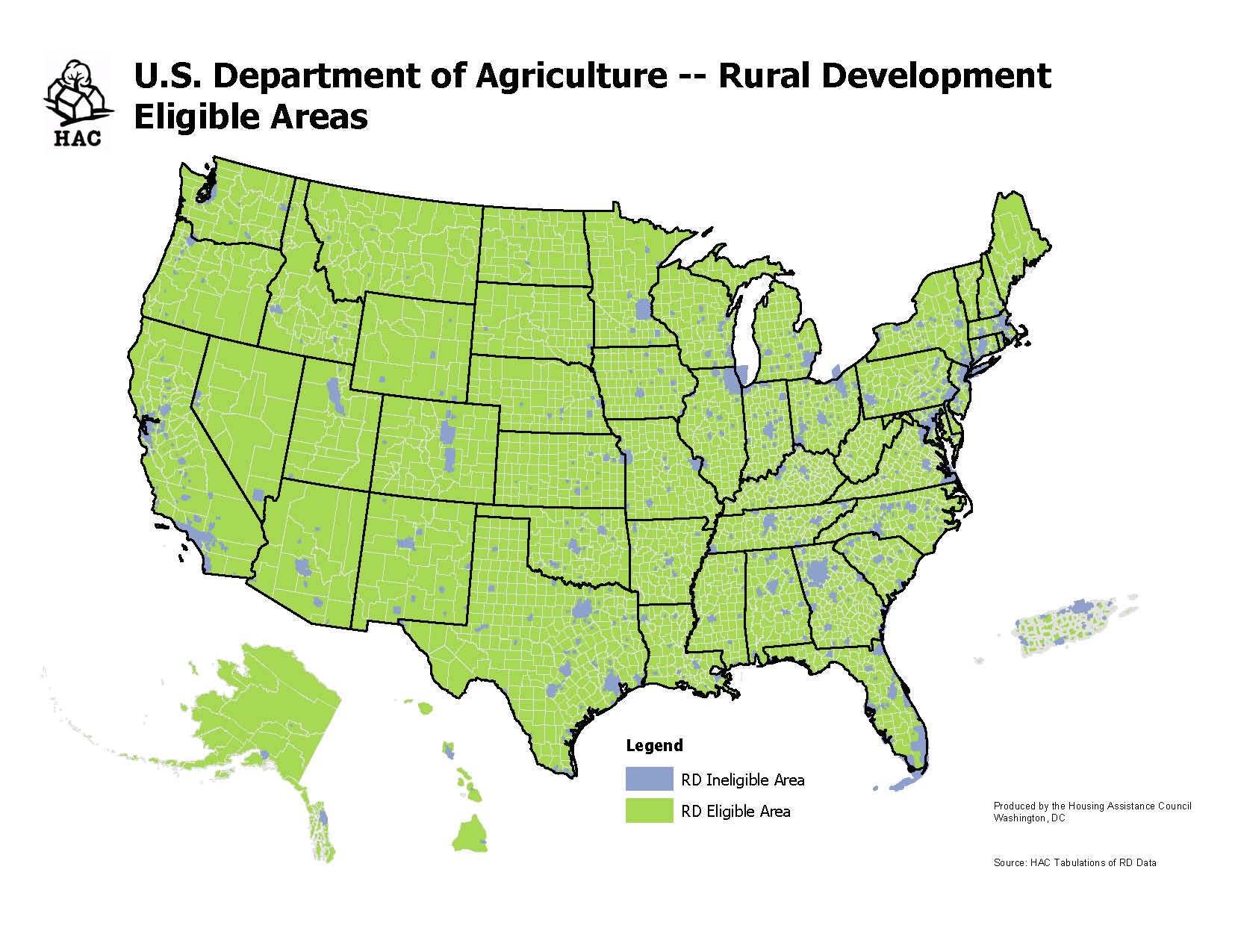This part is simple: a property must be in a rural place to be eligible for USDA rural housing funding. Beyond that simple statement, things get complicated. What places are rural, and why does it matter?
Congress used three characteristics to define rural for USDA’s housing programs: population size, rural character, and a serious shortage of mortgage credit. In various circumstances, the maximum population size can be 10,000 or 20,000 or 25,000. As a practical matter, it’s far easier to enter a property address at USDA’s property eligibility Web site than to try to figure out whether it fits the definition. And note that everything in this paragraph applies only to USDA’s housing programs; the rural eligibility definitions for community facilities, utilities, and business programs are different.
Click on the map for a larger view
The rural housing programs currently face two issues related to their eligibility definition. First, should currently eligible places remain eligible as their populations increase? Second, should population thresholds be raised so that additional places with larger populations become eligible?
After the 1990 and 2000 decennial Censuses, some places would have become ineligible because their populations had increased above the applicable threshold. Congress amended the statutory definition of rural so that every previously eligible place remained eligible, even if its population had increased, so long as the population was still under 25,000. Now the 2010 Census data create the same issue.
USDA is still in the process of determining what areas might now be too big to qualify for aid. The Housing Assistance Council has estimated that 500 places may have grown so much from 2000 to 2010 that they could become ineligible. HAC estimates their population at 9.1 million, or roughly 8 percent of the population in currently eligible areas.
Approximately 90 percent of these potentially ineligible places are located in metropolitan areas, where towns must have populations below 10,000 to be eligible. Not surprisingly, while they are scattered around the country, clusters of these growing exurbs are particularly noticeable in metros in California, Florida, and Arizona. Rural housing producers have invested time and money in planning developments in some of these places, and we can safely assume that many of them need more affordable housing.
Bills to “grandfather in” these places have been introduced in the House and Senate (H.R. 273 and S. 878), but must be attached to larger bills – probably the agriculture appropriations bill or continuing resolution – in order to pass.
As for the larger issue here, legislation has not yet been crafted that would raise the population thresholds for all rural housing eligibility determinations. The population limits for USDA’s rural housing programs are not the same as for its business or utilities programs, and other agencies use completely different definitions of rural. It’s understandable that GAO and Congress have suggested that consistent definitions would be useful.
Whatever rural is, we can agree on a sliding scale where the smaller the population the more rural a place is. A town of 5,000 feels different from a small city of 30,000. On that sliding scale, the farther a place is from a population center, the fewer resources are available to it and the more difficult housing development is.
It’s also understandable that larger towns and small cities would like to have access to a new pot of funds. USDA funds are already stretched thin, however, and getting thinner. Increased competition for a shrinking pie is likely to draw USDA housing funds to the places with larger populations, where housing development is generally easier than in remote rural areas.
Is that a desirable result? Does that further USDA’s rural mission? Or does this discussion reflect the results of an unnecessary shortage of affordable housing resources because of the way the U.S. economy is tilted?






Comments